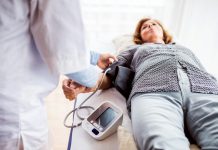
Heart bypass surgery, formally known as coronary artery bypass grafting (CABG), is a life-saving procedure for many people suffering from severe heart disease.
When arteries become blocked or too narrow, the heart’s blood supply is compromised, leading to heart attacks and other serious cardiovascular issues.
Heart bypass surgery aims to create new pathways for blood to flow to the heart, essentially “bypassing” the blocked or narrowed arteries.
This article simplifies the procedure, recovery time, and risks associated with heart bypass surgery, making the complex medical information accessible to everyone.
The need for heart bypass surgery arises from coronary artery disease (CAD), the most common type of heart disease. CAD occurs when the coronary arteries, responsible for supplying blood to the heart muscle, become damaged or diseased, usually due to a build-up of cholesterol-containing deposits called plaques.
When these plaques narrow the arteries, the blood flow to the heart is reduced, which can lead to chest pain (angina), shortness of breath, and other symptoms. In more severe cases, it can cause a heart attack.
The Procedure: Heart bypass surgery is a major operation that requires general anesthesia. During the surgery, a surgeon takes a blood vessel from another part of the body—often from the leg, arm, or chest—and grafts it onto the blocked or narrowed coronary artery.
This newly grafted vessel then bypasses the blocked segment, allowing blood to flow around the obstruction and reach the heart muscle. Depending on how many arteries are blocked, a patient might undergo single, double, triple, or even quadruple bypass surgery.
Recovery Time: Recovery from heart bypass surgery varies among individuals, influenced by factors like the patient’s overall health, the complexity of the surgery, and the presence of any complications.
Generally, patients can expect to spend around a week in the hospital following the procedure. The first few days are spent in intensive care to closely monitor the heart’s function.
After being discharged, recovery continues at home and can take about 6 to 12 weeks. During this period, patients gradually return to their regular activities, following their healthcare provider’s guidance and attending cardiac rehabilitation as recommended.
Risks: As with any major surgery, heart bypass surgery comes with risks, although the benefits often outweigh these potential downsides for many patients.
Possible complications include bleeding, infection, reactions to anesthesia, blood clots, kidney failure, stroke, heart attack, or even death.
Long-term risks include the possibility of the new grafts becoming narrowed over time. However, adopting a heart-healthy lifestyle post-surgery can help minimize these risks.
The evidence supporting the effectiveness of heart bypass surgery is robust, with research showing that it can significantly improve symptoms of CAD, such as angina, reduce the risk of heart attacks, and enhance the quality of life for patients with severe coronary artery disease.
It’s particularly beneficial for those with multiple blocked arteries or those who have not responded well to other treatments.
In summary, heart bypass surgery is a critical procedure for those with severe coronary artery disease, offering a chance for a healthier, more active life.
While the surgery involves significant recovery time and carries certain risks, the positive outcomes for many patients highlight its value as a treatment option.
As medical technology and techniques continue to advance, heart bypass surgery remains a cornerstone in the fight against heart disease, providing a vital lifeline for those in need.
If you care about heart disease, please read studies about a big cause of heart failure, and common blood test could advance heart failure treatment.
For more information about heart health, please see recent studies about a new way to repair human heart, and results showing drinking coffee may help reduce heart failure risk.
Copyright © 2024 Knowridge Science Report. All rights reserved.



